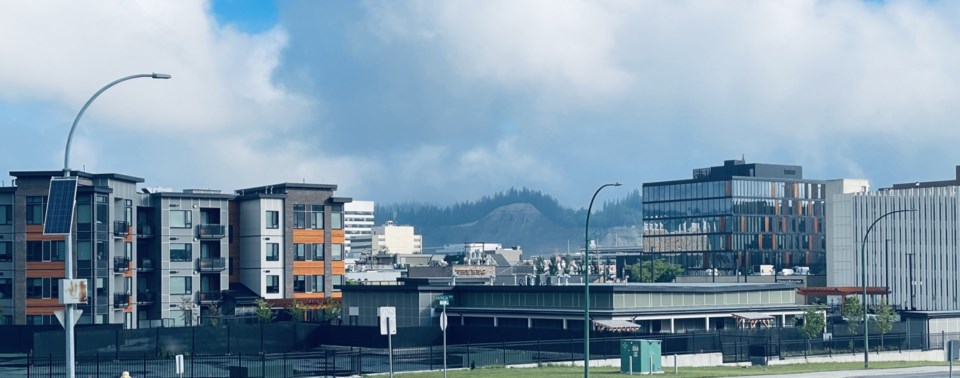The City of Prince George has a target to meet: 1,803 new homes in five years. This was issued by the province earlier this month, and Mayor Simon Yu said the city is ready to meet that goal.
But there will be challenges.
Across Canada, home affordability is reaching crisis levels. Home prices have shot up. Rents are out of reach for many, even those who can find decent housing in tight markets. Things aren’t as bad here, but there are signs that we may be in for much of the same in the years ahead. We need more places for people to live.
Those 1,803 net new units the province is calling for represent 75 per cent of the 2,404 housing units it’s estimated the city needs to accommodate projected growth.
Cities this size tend to go with two approaches to residential home development. One is to grow outwards, mapping out new subdivisions and building apartment complexes along the edges of the city. The other involves infill, particularly downtown or close to downtown.
This trend is growing in Canadian cities. Advocates promote the benefits of living close to the heart of the city. Walkability and easy access to work, shopping, services and leisure are two of the big ones. And, as we’re seeing in some cities that are reducing the number of parking spots required for new residential development, living downtown means less driving and more use of alternative transportation, like transit, bicycles or scooters, to improve personal health and promote environmental sustainability.
You can see examples of infill happening in Prince George. One of the most striking buildings in the downtown area is the Park House condominium. Rising above the older buildings around it, it’s a high-end residence that makes use of modern eco-friendly construction methods and is clearly lived in by people who take pride in their homes.
Joining it over the next two years will be a pair of new rental buildings that will share the same aesthetic.
These projects are a step toward a revitalized downtown, but it will take time. And it will take interest. A lot of people won’t even consider living in downtown Prince George for the same reasons some businesses are leaving, with vacant storefront after vacant storefront a sign of their concerns. Drugs and crime – much of it linked to homelessness – have changed people’s perception of the city core.
Downtown needs to be a destination again. Last week we gave you a three-part look at one local citizen’s group’s efforts to bring new life to the Civic Core. That plan, the result of months of work, seems to now live in a dusty file cabinet at city hall.
Paul Wise, the developer of the Park House rental buildings, who is also building new properties on the outskirts of the city, summed it up: “If you have a lot of people down here walking around, that creates a sense of safety. I know a lot of seniors that don’t want to come downtown because they feel unsafe. But we can make it more safe if there’s more people living here.”
He’s right, but it’s a bit of a catch-22. Building more higher-end residences downtown will bring in new people, whose presence will gradually change the tenor of the neighbourhood. But to attract them, the city must fund much-needed upgrades and adopt a stronger commitment to safety on downtown streets and sidewalks.
That’s a tough goal to meet, but not impossible. It will take political will. Let’s start with the Civic Core District Plan, which aims to rejuvenate the city-owned properties around city hall (Prince George Conference and Civic Centre, Kopar Memorial Arena, Canfor Leisure Pool, Two Rivers Gallery, the library, the Civic Plaza and, more recently, Knight’s Inn).
After the completion and submission of the citizen’s group’s report (Disclosure: Cameron Stolz, owner of this newspaper, was part of the group before buying The Citizen), the city started from scratch. Public input has been collected through surveys and a community visioning process, but there’s been little movement in almost a year.
The public and private sectors both have roles to play here, as an improved Civic Core and new housing are key to reversing the downtown’s decline. Local people with an investment in their community have had their say. Let’s see some action.



